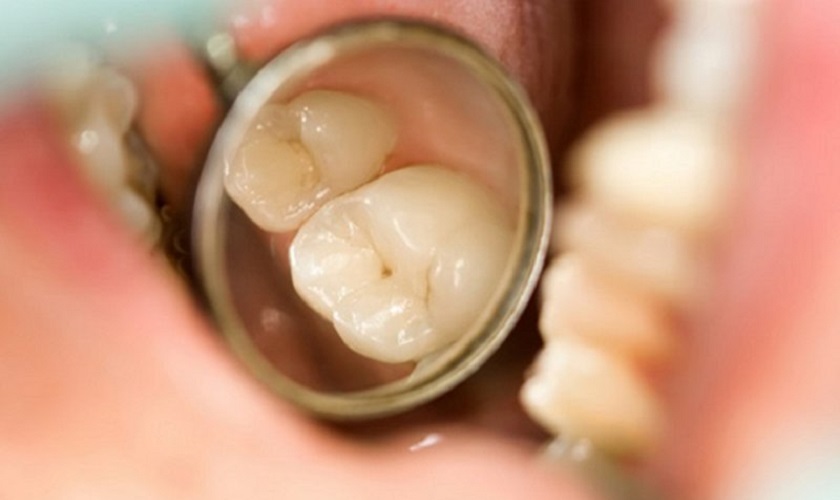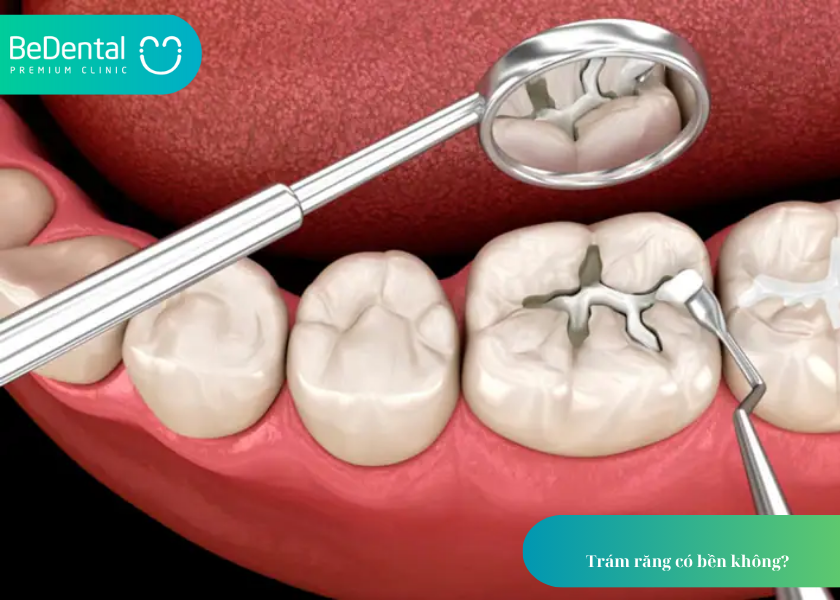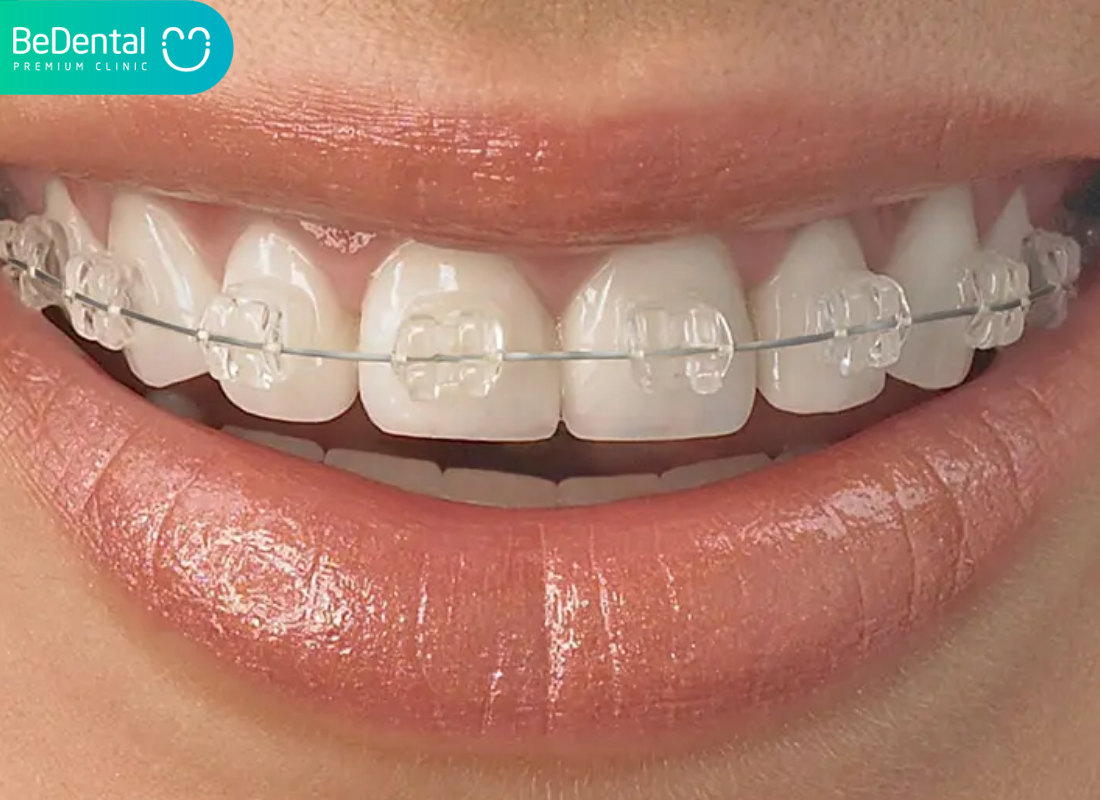Choosing between Invisalign vs braces can be a difficult decision, especially when considering factors such as cost, treatment time, comfort, and effectiveness. Both options have their own advantages and disadvantages, and the best choice depends on individual needs. In this article, we’ll compare braces vs Invisalign to help you make an informed decision.
Tư vấn chuyên môn bài viết:
BÁC SĨ DƯƠNG THỊ THÙY NGA
Invisalign vs Braces: Effectiveness and treatment time
One of the most important factors when comparing Invisalign vs braces is how long each treatment takes. Braces vs Invisalign which is faster? Traditional metal braces generally take between 18 to 24 months to straighten teeth, while Invisalign vs braces time can vary depending on the severity of misalignment. Fast braces vs Invisalign claim to provide quicker results, but Invisalign often requires fewer adjustments and can be faster for mild to moderate cases.
Invisalign vs Braces: Cost
The cost of Invisalign vs braces is another key consideration. On average, traditional metal braces vs Invisalign cost between $3,000 and $7,000, while Invisalign typically ranges from $3,500 to $8,000. However, the cost of braces vs Invisalign depends on location, treatment complexity, and insurance coverage. Some may find that ceramic braces vs Invisalign cost is slightly lower, while others may opt for Damon braces vs Invisalign cost, which can be higher.
Invisalign vs Braces: Aesthetic differences
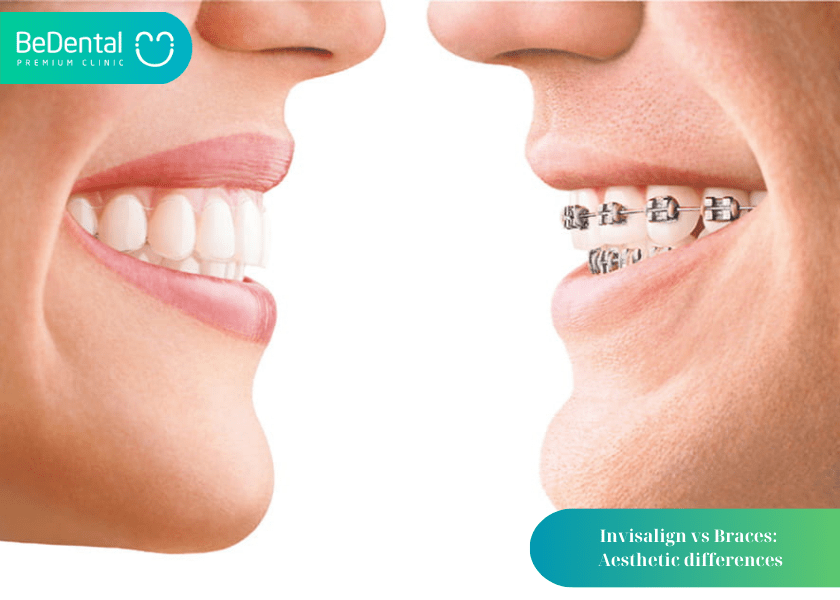
If aesthetics are a concern, clear braces vs Invisalign might be worth considering. Traditional braces vs Invisalign for teenagers can be more noticeable, whereas Invisalign aligners are nearly invisible. For adults and professionals, Invisalign vs braces adults is often the preferred choice for a discreet appearance.
Invisalign vs Braces: Comfort and maintenance
When comparing braces vs Invisalign pros and cons, comfort is a major factor. Invisalign vs braces pain varies, with traditional braces sometimes causing irritation due to metal brackets and wires. Invisalign aligners are smooth and less likely to cause mouth sores. However, they must be removed before eating and drinking, making maintenance slightly different compared to braces.
See more: What Is Orthodontics in Vietnam? 5 Common Orthodontic Methods Today
Invisalign vs Braces: Different dental issues
Invisalign vs Braces for overbite
Both braces and Invisalign can effectively treat an overbite by gradually shifting the teeth into proper alignment. However, the severity of the overbite determines the best option:
- Mild to moderate overbites: Invisalign is a viable choice as it uses clear aligners to reposition the teeth gradually.
- Severe overbites: Traditional braces, often combined with rubber bands or other orthodontic appliances, are more effective in correcting significant overbite issues as they provide stronger force and better control over tooth movement.
Invisalign vs Braces for gaps
Closing gaps between teeth can be achieved with both treatment methods, but effectiveness varies depending on the gap size:
- Small gaps: Invisalign aligners can efficiently close minor spaces between teeth by gradually moving them together.
- Larger gaps: Braces provide better control over tooth movement and can handle extensive spacing issues more effectively, especially when additional orthodontic treatments like expanders or power chains are needed.
Invisalign vs Braces for open bite
An open bite occurs when the upper and lower teeth do not meet when the mouth is closed. The treatment choice depends on the severity:
- Mild open bites: Invisalign can help reposition teeth to close a minor open bite by encouraging proper vertical movement.
- Moderate to severe open bites: Traditional braces are generally more effective, as they can apply vertical force more efficiently with the use of elastics and other orthodontic attachments to reposition teeth properly.
Invisalign vs Braces for misalignment
The effectiveness of braces and Invisalign depends on the complexity of the dental misalignment:
- Mild to moderate misalignments: Invisalign is a great choice for cases involving minor crowding, spacing, and slight bite issues, as it provides a more aesthetic and comfortable alternative.
- Severe misalignments: Traditional braces, including metal, ceramic, and lingual braces, are usually more effective as they provide precise control over tooth movement. They are ideal for cases with extreme crowding, significant rotations, and jaw alignment problems.
See more: What is the purpose of orthodontic elastics?
Pros and Cons of Invisalign vs Braces
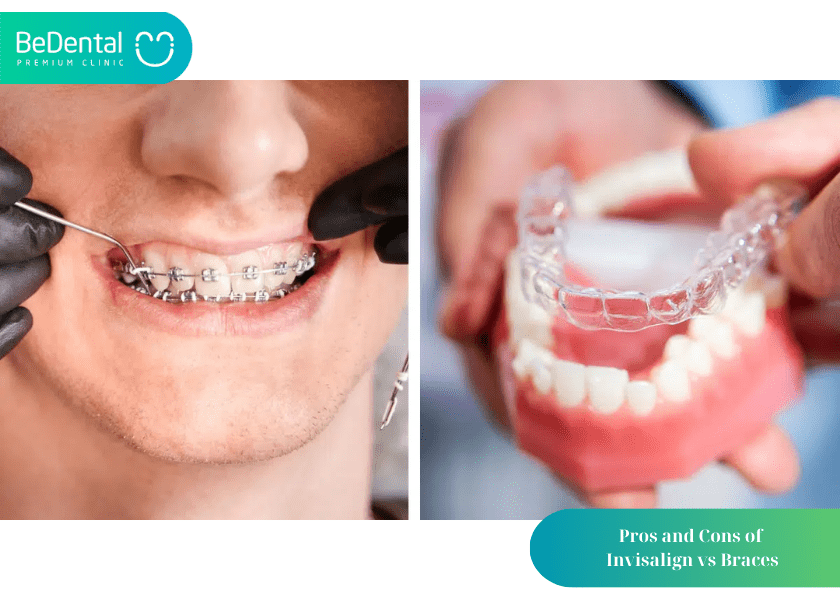
Pros of braces
- Effective for complex dental issues – Braces are highly effective in treating severe misalignments, including extreme crowding, rotated teeth, deep overbites, and jaw alignment problems. They offer more precise control over tooth movement.
- No need to remove for eating or drinking – Unlike Invisalign, braces are fixed onto the teeth, allowing patients to eat and drink without worrying about removing aligners or misplacing them.
- More predictable for severe cases – Braces apply continuous pressure to shift teeth into place, making them more reliable for complicated orthodontic corrections that require significant adjustments.
Cons of braces
- Highly noticeable – Metal braces are very visible, which may be a concern for those who prefer a more discreet orthodontic solution. Ceramic and lingual braces offer more aesthetic options but can still be noticeable.
- Discomfort and irritation – The metal brackets and wires can cause soreness, irritation, and even minor cuts inside the mouth. Adjustments can also lead to temporary discomfort.
- Frequent dental visits required – Patients need to visit their orthodontist regularly for adjustments, tightening, and monitoring of progress, which can be inconvenient for those with busy schedules.
Pros of Invisalign
- Nearly invisible appearance – Invisalign aligners are made of clear plastic, making them almost unnoticeable when worn. This is a great advantage for adults and teens who want a discreet orthodontic treatment.
- More comfortable than metal braces – Since Invisalign aligners are made of smooth plastic and do not use brackets or wires, they reduce the chances of mouth irritation and discomfort.
- Easier to maintain oral hygiene – Because Invisalign aligners are removable, users can brush and floss their teeth as usual, reducing the risk of plaque buildup, cavities, and gum disease.
Cons of Invisalign
- Must be worn at least 22 hours a day – Invisalign requires strict compliance to be effective. Patients must wear their aligners for at least 22 hours daily, removing them only for eating, drinking (except water), and brushing.
- Not suitable for severe misalignment – While Invisalign is effective for mild to moderate cases, it may not work well for complex issues such as severe crowding, extreme overbites, or cases requiring jaw realignment.
- Can be more expensive – The cost of Invisalign is typically higher than traditional braces due to the advanced technology used, custom-made aligners, and frequent replacements throughout the treatment.
Which is the best option for you?
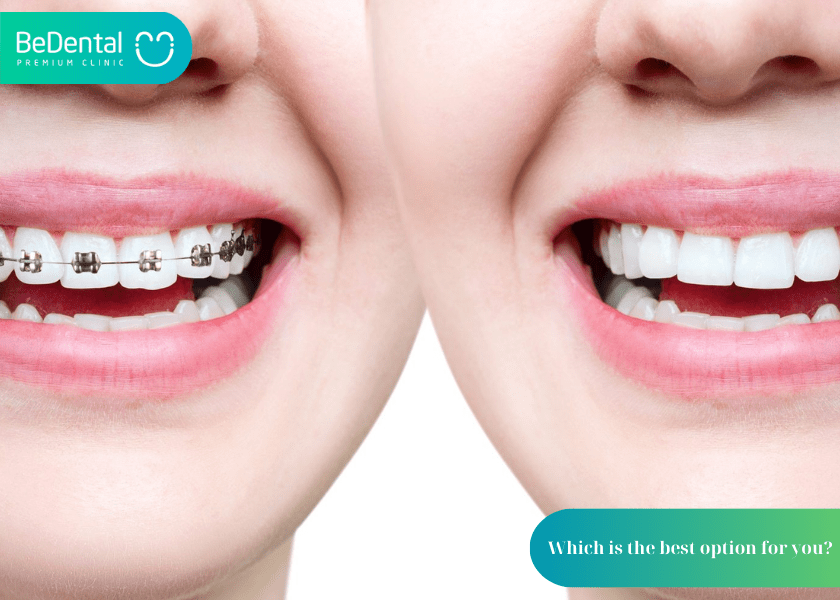
Here’s a comparison table for Invisalign vs Braces to help visualize the differences:
|
Feature |
Invisalign |
Braces (Metal, Ceramic, Lingual) |
| Appearance | Nearly invisible, clear aligners | Noticeable metal or ceramic brackets and wires |
| Comfort | Smooth plastic, no sharp edges | Can cause irritation due to metal wires and brackets |
| Effectiveness | Effective for mild to moderate cases | Suitable for all cases, including severe misalignments |
| Treatment Duration | 12-18 months on average | 18-24 months (varies based on complexity) |
| Removability | Removable for eating and cleaning | Fixed in place, cannot be removed |
| Oral Hygiene | Easy to maintain oral hygiene | Requires careful brushing and flossing around brackets |
| Dietary Restrictions | No restrictions, aligners are removed while eating | Avoid hard, sticky, or chewy foods that can damage braces |
| Pain & Discomfort | Mild discomfort when switching aligners | More discomfort due to brackets, wires, and tightening |
| Maintenance | Requires wearing 20-22 hours per day, regular cleaning | Regular orthodontist visits for adjustments |
| Cost | Typically $3,000 – $8,000 | $2,500 – $7,500 (varies by type) |
| Best for | Adults & teens with mild to moderate issues | All ages and all types of dental issues |
| Check-up Frequency | Every 4-6 weeks | Every 4-6 weeks for adjustments |
| Treatment Control | Less precise for complex movements | More precise for severe cases |
| Speech Impact | May cause slight lisp initially | Minimal speech impact |
| Staining Risk | Can stain if not cleaned properly | Brackets and elastics may stain over time |
When comparing Invisalign vs braces which is better, the best choice depends on your individual needs. If you have a complex dental issue, traditional dental braces vs Invisalign may be more effective. However, if aesthetics and comfort are your priority, Invisalign vs braces results may favor clear aligners.
For those considering treatment in specific locations, options like braces vs Invisalign Grove City OH or dental braces vs Invisalign Columbus OH can provide localized insights. Additionally, many discussions on Invisalign vs braces Reddit can offer firsthand experiences from real patients.
Ultimately, whether you choose braces vs Invisalign for kids, teens, or adults, consulting a qualified orthodontist will help you determine the best solution for your dental needs.
See more: Getting braces in Ho Chi Minh city
BEDENTAL - TOP STANDARD DENTISTRY SYSTEM
In HANOI
Address 1: 7B Thi Sach St, Ngo Thi Nham, Hai Ba Trung Dist, Ha Noi. - 0934.61.9090
Address 2: No 129 Hoang Ngan, Yen Hoa, Cau Giay Dist, Ha Noi. - 0934.61.9090
In HO CHI MINH
Address 1: 53 -55 -57 Pho Duc Chinh St, Nguyen Thai Binh, Dist. 1, Ho Chi Minh. - 0766.00.8080
Working: 9am - 8pm everyday
Website: https://bedental.vn/en/



